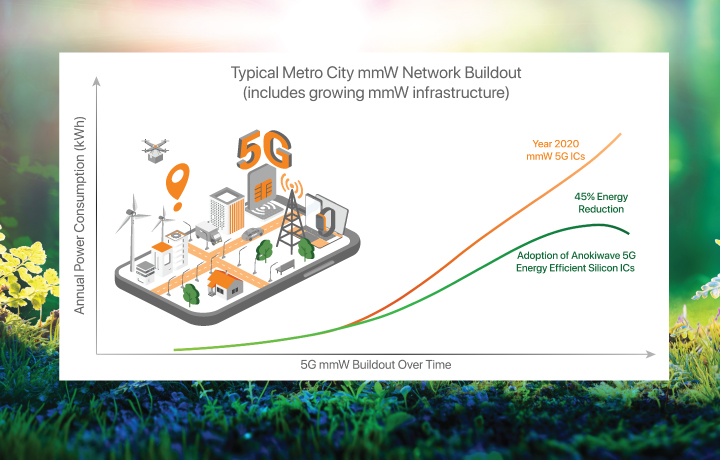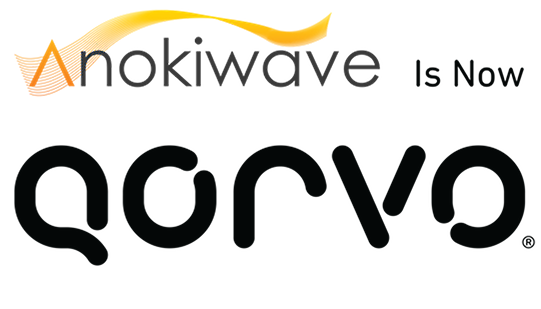Bending the mmW 5G Energy Curve
 |
Ke Lu |
|---|---|
|
|
|

As 5G technology moves to more efficient networks, operators can further support net-zero emissions goals with improvements offered by the IC technology used in their systems.
According to the CTIA January 26, 2022, report, 5G is poised to be the greenest generation of network technology yet. The network builds upon existing network infrastructure to handle increased demand for data in an interconnected society. It is transforming industries and is changing the way businesses and consumers use mobile technologies, providing substantial processing and efficiency benefits that previous generations of mobile technology did not. As 5G technology moves to more efficient networks, operators can further support net-zero emissions goals with improvements offered by the IC technology used in their systems.
By the end of 2020, more than 200 million 5G connections had already been adopted – a figure that is expected to balloon to 1 billion by the end of 2023 and nearly 2 billion by the end of 2025. This spike is anticipated for good reason. 5G can deliver data rates 10 times faster and with 100 times more capacity, at latencies up to 10 times shorter compared to 4G networks, enabling it to handle growing data traffic.
It is sometimes less well known that 5G is not one-size-fits-all, and can be implemented at three different bands:
- Low band: Typically covers hundreds of square miles with 5G service that ranges in speed from 30 to 250 megabits per second (Mbps).
- Mid-band: Typically covers a several-mile radius with 5G that currently ranges from 100 to 900Mbps.
- Millimeter wave (mmW) band: Typically covers a one mile or lower radius while delivering roughly 1-3 Gbps speeds.
Low band has emerged as the most common market, statistics from the Global Mobile Suppliers Association showing that 396 operators in 158 countries/territories were known to have launched LTE or 5G networks using low-band spectrum as of May 2021.
On the other end of the spectrum, we anticipate mmW to truly take off in 2024, unlocking the true promise of 5G to provide new and enhanced experiences with multi-Gbps data rates, low latency and virtually unlimited capacity while supporting an array of devices beyond smartphones, tablets, and laptops.
mmW spectrum is best suited for short range transmissions, and small cells, outdoor and indoor CPE terminals are best suited to deliver mmW signals. This means many user terminals will be deployed in a given area. With the current technology available today, one would expect a large increase of energy required to deploy these systems; however, using Anokiwave’s silicon IC technology, operators can bend the energy curve and continue to support their net-zero emissions goals.
Using data provided in GSMA’s latest June 2022 report, we have built a model of a typical metro installation of a mmW 5G network. Starting in year 2020, where we believe mmW 5G penetration rate is very small, we estimate the 5G equipment profile (GnodeB, small cell, CPE, UE) based on GSMA’s estimate plus the penetration of mmW into year 2030. Using available silicon beamformer IC efficiency numbers from 2020 as a baseline of annual power consumption in kWh, then applying Anokiwave’s new architecture and device technology that enables both DC efficiency improvements and architectures that enable low loss antenna designs for further energy savings that maximize consumption factor (EIRP/DC power), we can bend the energy curve for our customers, continuing to support net-zero emissions goals for our customers.
Anokiwave is committing to reducing our environmental impact and build a sustainable future with the following actions:
- Bending the energy curve for our customers with industry-leading 5G and SATCOM ICs featuring dramatic DC efficiency improvements with each generation.
- Developing unique IC architectures that enable low loss antenna designs for further energy savings that maximize consumption factor (EIRP/DC power).
- Creating features such as Kinetic Green™ technology to further reduce DC power consumption in fielded 5G and SATCOM systems.
- Selecting suppliers with commitments for sustainable silicon, packaging, assembly, and test technologies.
For additional information on our 5G products, tools, and resources, please visit our 5G page or contact us directly about your 5G needs.
Read Anokiwave's Commitment to Reduce our Environmental Impact.

